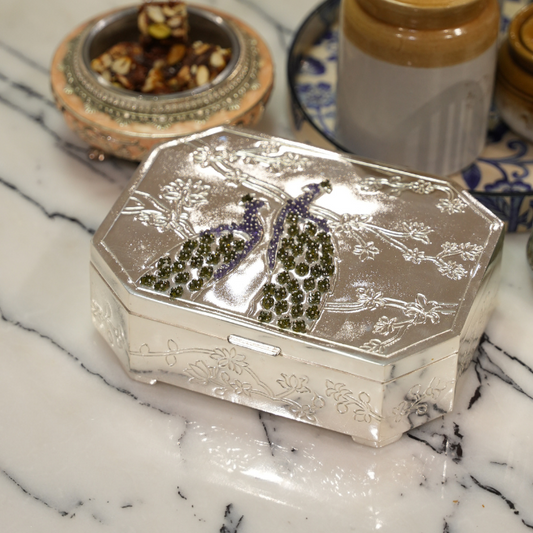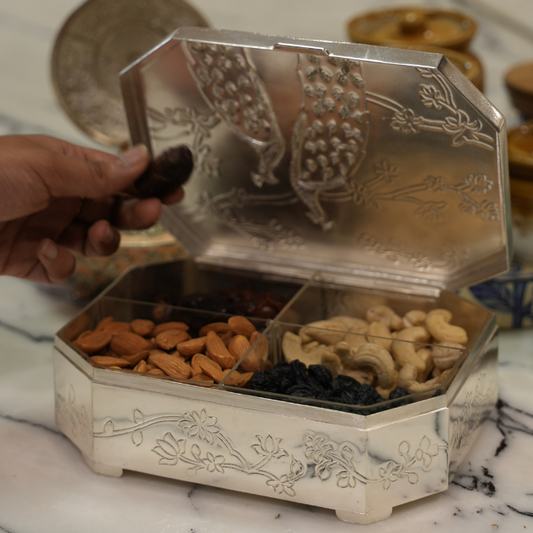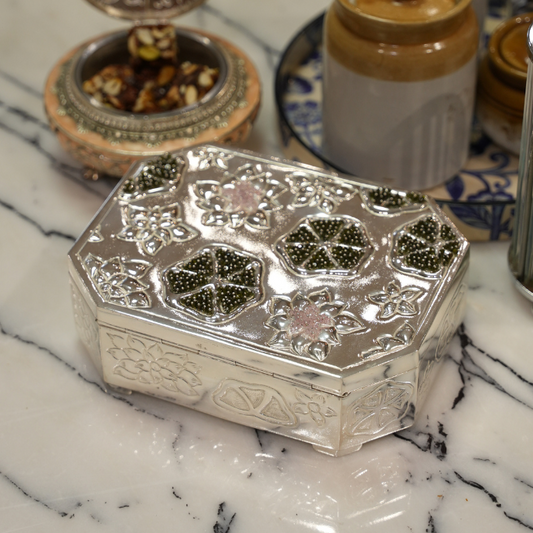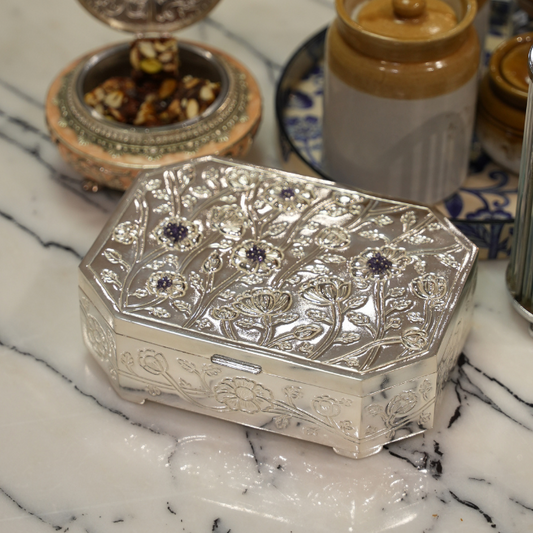Is Sterling Silver Good? Everything You Need to Know About Sterling Silver
Sterling silver is a beloved metal, known for its beauty, versatility, and affordability. Understanding sterling silver's properties and uses can help you appreciate its value and make informed decisions when purchasing or caring for silver items. This guide covers everything you need to know about sterling silver, from its definition to its benefits and maintenance.
Understanding Sterling Silver
Is Sterling Silver Good?
Sterling silver is an alloy made up of 92.5% silver and 7.5% other metals, usually copper. This composition enhances silver's durability without compromising its appearance.
The benefits and properties of sterling silver include:
- Durability: Stronger and more resistant to damage than pure silver.
- Affordability: Less expensive than gold and platinum, making it accessible.
- Appearance: Offers a lustrous and elegant look, similar to pure silver.
Common Uses of Sterling Silver
Sterling silver is widely used in:
- Jewelry: Rings, necklaces, bracelets, and earrings.
- Utensils: Cutlery, serving dishes, and decorative items.
- Decorative Items: Picture frames, ornaments, and collectibles.
Comparison with Other Types of Silver
- Pure Silver: Composed of 99.9% silver, also known as fine silver. It is softer and less durable than sterling silver.
- Coin Silver: Typically contains 90% silver and 10% other metals.
-
Silver-Plated Items: Made of a base metal coated with a thin layer of silver.
How to Identify Silver
Visual Inspection
Look for hallmarks or stamps such as "925" or "sterling" on the item. Genuine sterling silver items will have a consistent color and texture, without flaking or discoloration.
Magnet Test
Silver is not magnetic. Using a magnet, you can test if the item is attracted to it. If it sticks, the item is likely not pure silver.
Ice Test
Place an ice cube on the silver item. Silver has high thermal conductivity, so the ice will melt quickly compared to other metals.
Sound Test
Genuine silver produces a distinct, pleasant ringing sound when tapped with a metal object. This sound is different from the dull thud of base metals.
How to Check Silver Purity
Acid Test
Apply a drop of nitric acid to a small, inconspicuous area of the item. Genuine silver will show a creamy white reaction, while other metals may show different colors. Always follow safety precautions when handling acids.
XRF Analyzer
X-ray fluorescence (XRF) analysis is a non-destructive method to test silver purity. It provides accurate results and is commonly used by professionals.
Archimedes’ Principle
Measure the density of the item by calculating its mass and volume. Silver has a specific density that can help determine its purity. Follow a step-by-step guide to perform this test accurately.
Comparison with Other Metals
Learn to differentiate silver from similar-looking metals like white gold and platinum. Silver is more prone to tarnishing but has a unique color and reflectivity.
Common Misconceptions and Myths
Myth: Sterling Silver Tarnishes Easily
While sterling silver can tarnish, proper care and maintenance can prevent and reduce tarnishing. Use anti-tarnish cloths and store items in a dry, cool place.
Myth: All Silver is the Same
Different types of silver have varying compositions and properties. Sterling silver, fine silver, and silver-plated items each have unique characteristics.
Myth: Silver Testing is Complex
There are simple and accessible methods for testing silver at home, such as visual inspection, magnet tests, and ice tests.
Practical Tips for Buying and Maintaining Silver
Buying Tips
- Ensure you purchase from reputable sellers.
- Look for certifications and hallmarks.
- Be cautious of deals that seem too good to be true.
Maintenance and Care
- Clean silver items regularly with a soft cloth and mild cleaner.
- Store silver in anti-tarnish bags or cloths.
- Avoid exposure to harsh chemicals and moisture.
Conclusion
Sterling silver is a versatile and valuable metal, offering numerous benefits and uses. By understanding how to identify and test sterling silver, you can ensure you are getting genuine items and properly maintaining them. Embrace the beauty and elegance of sterling silver in your everyday life.
FAQs
What is sterling silver?
Sterling silver is an alloy consisting of 92.5% silver and 7.5% other metals, typically copper.
How can you identify sterling silver?
Look for hallmarks such as "925" or "sterling" and perform simple tests like the magnet test, ice test, and sound test.
Is sterling silver good for everyday wear?
Yes, sterling silver is durable and suitable for everyday wear, especially when properly maintained.
What are the benefits of sterling silver jewelry?
Sterling silver jewelry is durable, affordable, and offers a beautiful, lustrous appearance.
How do you care for and maintain sterling silver?
Clean regularly with a soft cloth, store in anti-tarnish bags, and avoid exposure to harsh chemicals and moisture.
Is sterling silver hypoallergenic?
Sterling silver is generally hypoallergenic, but some individuals may be sensitive to the small amount of other metals in the alloy.
How can you tell if sterling silver is real or fake?
Perform visual inspections for hallmarks, and use simple tests like the magnet test, ice test, and sound test to verify authenticity.







